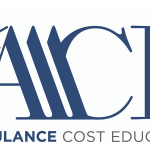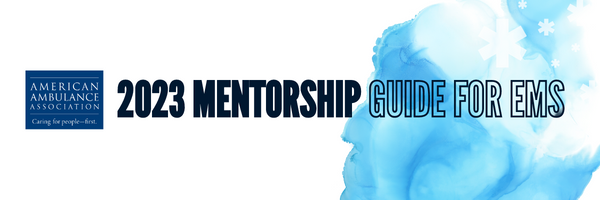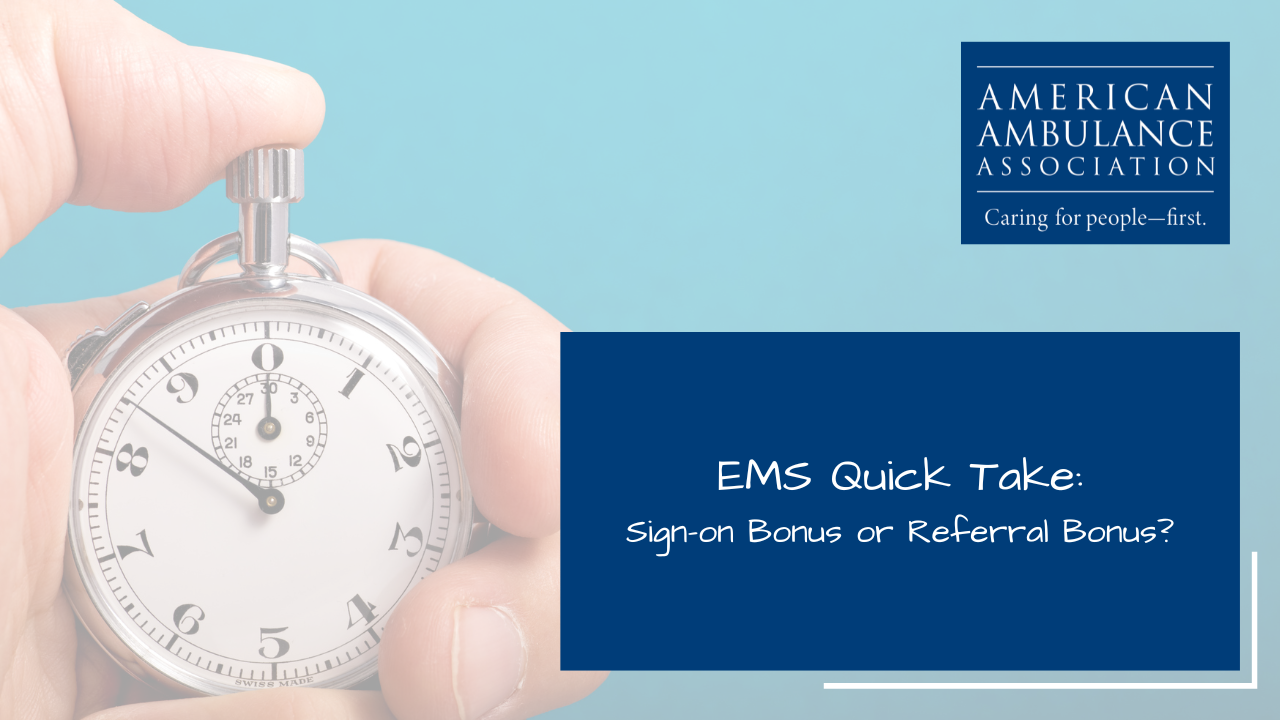I was just a kid when I started in EMS. 23 years old, hungry for adventure, and ready for everything the world of EMS was prepared to give me. Car accidents, gunshot wounds, stabbings, intoxicated shenanigans, elderly falls, fist fights, medical emergencies, strokes, and cardiac arrest were all on my list of expected possibilities. One of the scenarios I had not thought of, and nobody presented to me throughout school and orientation, was the possibility of clocking in for shift and not going home. I do not recall line of duty deaths being a discussion point in the paramedic curriculum, job interview, or orientation process. I had experienced the unexpected loss of a younger sibling due to a motor vehicle crash before I started my journey in EMS, but the fact that life is short and unpredictable did not connect with the fact that I was knowingly and willingly walking myself into unknown and potentially dangerous situations with each response. Even after the UW Med Flight crash happened early in my career, and in my service area, we simply did not talk about our own potential for death as a direct result of our profession.
Years later, after many more line of duty deaths and even more reports of violence against EMS and healthcare workers, this topic weighs heavy on my mind. In my time as Staff Development Manager for a service, I pushed for the DT4EMS courses to train our medics on how to recognize potential dangers, escape those situations, and defend themselves if they are unable to escape. We all know the ‘scene safe/BSI’ tagline and list of what things might make a scene unsafe is not enough. As the Rescue Task Force (RTF) formed, I watched as some were excited for the opportunity to be involved and others started to question their willingness to respond to so many unknown situations as their young families were beginning to grow. I started asking myself if EMS agencies are doing enough in terms of preparing themselves and their employees for the possibility of a line of duty death.
The Line of Duty Death Handbook, published in part by the AAA, is a great tool to start building policies, protocols and personnel records. The handbook guides you through the importance of having employees fill out emergency contact and next of kin forms, and keeping them updated, as well as assigning family liaisons and how to manage coverage for funeral services. As I reviewed this, I started thinking about the assignment of a family liaison—a member of your agency who knew the individual well and will be the primary contact for everything the family needs once the notification has been made. What type of person should be assigned this role, and what kind of training should they have? I sat down with KC Schuler, MDiv and board member for the Fox Valley Critical Incident Stress Management group to discuss.
What are some considerations services should make when putting together their line of duty death policy/procedure?
I think the first significant consideration should be conducting pre-incident training. I mean, are you starting the conversation about critical incident stress exposure all the way up to, and including, the possibility that they may never go home to their family, at orientation? During onboarding? So many of the EMTs and Paramedics coming in are young, and this may be their first job. In my experience, they can be somewhat blind to the possibilities. Early education and creating a culture of support—including letting them know you have their back (and their family’s back) in every potential scenario is important. The second consideration, I think, is to determine what scope you define as a line of duty death. The on-shift motor vehicle crash or incident resulting in death while on the clock is apparent, but what about suicide? If someone is having significant job-related stress and commits suicide, will that be looked at as a line of duty death, or not? This is something all organizations need to consider before such an event happens.
S: What type of actions would you recommend take place, or are discussed, as part of the orientation process?
KC: This is a great time for employees to fill out the emergency contact and next of kin form—this also provides an opening to discuss the possibility of death and the importance of filling out the form accurately and keeping it up to date. They are the best ones to tell you who you should notify in such a situation; guessing in the event of a death is not ideal. A portion of orientation and annual training should also be spent on mental health, including awareness, recognition of post-traumatic stress symptoms in themselves and their peers, and available support resources. Trained peer support and EAP can be very valuable in the management of work and home related stressors. Again, being intentional to build and sustain an organizational culture of support prior to an unfortunate tragedy like a line of duty death will help all those involved.
S: The Line of Duty Death Handbook talks about assigning a family liaison—a person who becomes the 24/7 primary contact for the family once notification has been made. This person should be available, in person and via phone, and dedicated to the family whether it is household chores such as mowing the lawn and grocery shopping, to communicating with out of town family members and arranging hotels. Who should be considered for such an assignment, and what might the service do to prepare these individuals?
KC: This is a high-intensity assignment, and this role should not be assigned to shifts in the beginning either. Being a family liaison is a big responsibility, and it is not a responsibility that should shift from person to person; ideally, the family will have one liaison for the duration. Trust is a significant factor—the family must trust the individual they are assigned, so that individual must be able to build that trust or recognize early if it is not a good match. Services should consider the following in their selection of a family liaison:
- Someone who is specially trained in being a family liaison. The nature of this position is demanding and can significantly interfere with the liaison’s personal life and responsibilities of emotionally supporting another. They need to be able to have clear boundaries, open lines of communication to leadership, and have a stellar support system in place as well. The International Critical Incident Stress Foundation does offer a 2-day LODD course.
- Preferably, the family liaison would not have any other roles (such as being an honor guard member) as they will likely have other duties and responsibilities throughout the process and at the funeral itself. The liaison duties need to be 100% dedicated to the family.
- Gender sensitivity—If the deceased is a male, you may want to assign a female liaison to the spouse as there can be a lot of strong emotions during this time and unhealthy attachments can form. You should consider gender identity and sexual preference in assigning a liaison as well.
Training and preparation of individuals for family liaison assignment should happen before an event like this ever occurs.
S: If I am a service director looking to send a few people to train for this, what type of people should I look for?
KC: If I had to provide a list of characteristics for liaison selection, it would probably include someone who:
- Does not gossip and respects confidentiality.
- Can make things happen—someone who is comfortable making, and either has the authority to make decisions on behalf of the service, or has direct contact with someone who can.
- Has a great support system of their own.
- Understands and respects boundaries—can set limits where appropriate and necessary.
- Is comfortable speaking, but also understands and can recognize the importance of silence, or when not to respond.
S: When it comes to families, there are a lot of dynamics a liaison might have to contend with such as divided families or family members that do not get along. If more than one individual is involved in a LODD, such as two members killed in a car accident, there may also be dynamics between those two families that need to be considered. What are your recommendations for addressing those type situations, where either a single family or multiple families may be at odds?
KC: If there is more than one family involved (i.e., two employees) you will want to assign each family a liaison, and those liaisons will need to be in close communication with each other and the organization leadership. One thing agencies may wish to consider is holding family support or family networking events throughout the year, before an event like this happens. I mean, beyond the Christmas parties and summer picnics where all families are invited—events that allow family members of your employees to get together, build relationships, and form a support system between families who understand the dynamic of supporting someone in EMS. If families are meeting for the first time as the result of a fatal accident, the dynamic will likely be much different (and more difficult) than if they are afforded a place to get to know each other and form bonds before such an event would happen. It is a lot easier to blame a stranger than a friend; it is easier to share pain and experience with someone you share a bond.
If there is pre-incident conflict within a family, such as animosity between divorced parents or an ex-spouse, these situations become more difficult to manage. Training will help the liaison better navigate and handle these situations.
S: You mentioned before, the importance of knowing the resources in your area—what would you say to those services who might plan to reach out to their local CISM or hospital for a family liaison or other support in this situation?
KC: As I mentioned before, EAP is a valuable resource but likely not the best as a stand-alone support in the event of LODD, and it certainly would not be able to function as a family liaison. Many hospitals may have pastoral care staff, such as myself; however, many would not have the capacity to operate as a family liaison or the awareness, authority, and connections to make decisions on behalf of your service. So, neither of these options would not be the best plan in my opinion. CISM teams can help in debriefings, but again, that is different than functioning as a family liaison. Some of your staff members that are trained as CISM peer counselors, however, may be excellent candidates for continued training in LODD and more specifically, as family liaisons.
S: You also mentioned how the family liaison should be taken off shift responsibility and assignments while they are functioning as the family liaison. What time frame should a service expect, and could the director or administrative staff function as the liaison to reduce scheduling disruptions?
KC: The time frame will be variable and unique to each situation; this is part of the importance of a service’s selection and training of these individuals. They need to determine when the family needs the high-intensity liaison, when to move to periodic support, and when to transition out to periodic or then eventual annual check-ins. They need to do this without creating a co-dependence.
A director or administrative staff would not be the ideal candidate for the family liaison assignment. The director will be busy dealing with many other operational details and would not be able to devote the time or attention to the family during the high-intensity phase. Ideally, the liaison will be someone the fallen individual knew, worked alongside, and had a good relationship with; someone who can share some stories with the family. The liaison’s ability to do this goes back to the importance of fostering the family/spousal support network as well.
There are many ways in which services can prepare for a line of duty death. Option one is to bury your head in the sand and pretend it will never happen to you. This, we know, is a lie; a lie to ourselves, our employees and their families. Option two is to address the potential with eyes wide open and full support starting in orientation and stretching through the selection of qualified employees for advanced training. Even if I am lucky enough never to experience a LODD personally, I would rather work for an organization adopting option two every time.
“It is a curious thing, the death of a loved one. We all know that our time in this world is limited and that eventually all of us will end up underneath some sheet, never to wake up. And yet it is always a surprise when it happens to someone we know. It is like walking up the stairs to your bedroom in the dark, and thinking there is one more stair than there is. Your foot falls down, through the air, and there is a sickly moment of dark surprise as you try and readjust the way you thought of things.”
― Lemony Snicket, Horseradish














